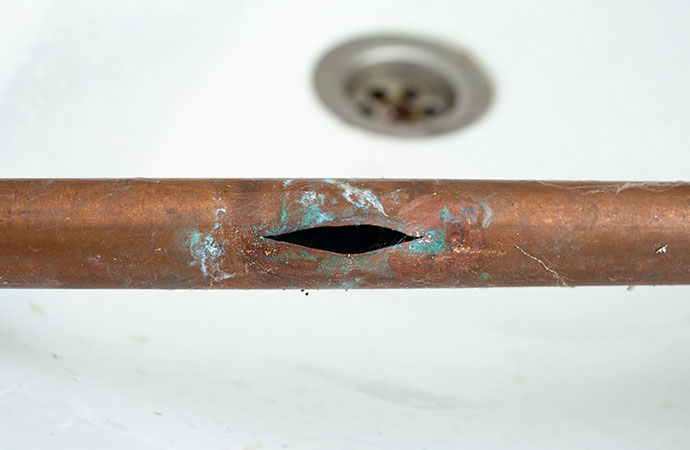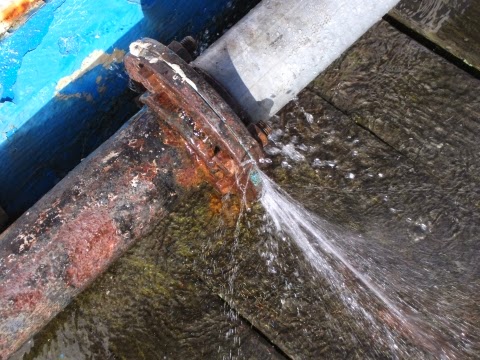From Detection to Correction: A Fast Approach to Handling Burst Pipes
Go ServicesThey are making a number of great pointers about What to Know Before Installing a Dishwasher overall in this content further down.

A ruptured pipeline is a major emergency; you can just stand as you see water you pay very much to rejoin with the planet. In worse cases, you observe a swimming pool on your kitchen area flooring, which is a fantastic journey danger, particularly if you have kids around. If the pipeline that ruptured was in your wall surfaces, trouble: you may need to repaint that entire section.
Exactly how can a tragedy like a ruptured pipeline be protected against as well as handled? Well, by listening to your expert emergency plumbing professionals and complying with these rules.
Just how do I know when my pipes have burst?
Fluctuating water pressures
Pipes do not just burst in a day. You may have discovered that your kitchen area tap or shower doesn't run right away when you transform the tap. It may pause for a couple of secs and after that blast you with more force than typical.
In other circumstances, the water might appear normal at first, then drop in pressure after a couple of secs.
Infected water
Many individuals think a burst pipe is a one-way electrical outlet. Rather the contrary. As water spurts of the hole or wound in your plumbing system, impurities locate their way in.
Your water might be contaminated from the source, so if you can, check if your water tank has any problems. However, if your drinking water is supplied and purified by the city government, you should call your plumber immediately if you see or scent anything amusing in your water.
Puddles under pipelines and also sinks
When a pipeline ruptureds, the outflow develops a pool. It might show up that the pool is growing in size, and no matter the amount of times you wipe the pool, in a couple of minutes, there's one more one waiting to be cleaned. Frequently, you may not have the ability to trace the puddle to any kind of noticeable pipes. This is a sign to call a specialist plumber.
Wet walls and also water spots
Before a pipeline ruptureds, it will leakage, a lot of times. If this consistent leaking goes undetected, the leak might finish into a vast tear in your pipe. One very easy method to avoid this emergency is to watch out for wet wall surfaces ad water discolorations. These water spots will lead you right to the leakage.
Untraceable trickling noises
Pipeline ruptureds can happen in one of the most unpleasant areas, like within concrete, inside wall surfaces, or under sinks. When the house goes quiet, you may have the ability to hear an aggravatingly consistent dripping sound. Even after you have actually checked your shower head and also kitchen faucet, the dripping may continue.
Dear visitor, the dripping might be originating from a pipe inside your wall surfaces. There isn't much you can do regarding that, other than tell a specialist plumber.
Turn up the Warmth
Set up followers to blow heat right into cold spaces. Maintain the garage door closed. If you have actually decreased water circulation, heat one of the most vulnerable pipelines (generally in basements as well as crawl spaces or near outside walls) with a hair clothes dryer. Leave the tap on while you apply warmth. As you thaw ice, the flow will certainly increase. To avoid pipelines from freezing, protect your wall surfaces.
Begin Removing the Water
Grab the wipe, containers and also a shop vacuum cleaner to begin to get rid of the water since you absolutely don't want it soaking into every little thing else in the house. Plus, a quick tidy up will reduce the chances of something getting musty.
What do I do when I spot a ruptured pipeline?
Your water meter will continue to run also while your water wastes. To decrease your losses, find the primary controls and also transform the supply off. The water mains are an above-ground structure beside your property.
How to Fix & Detect a Leaking Pipe
How Do I Know if a Pipe is Leaking?
Leak detection tests can help you determine if your pipe has a leak. Even if you don’t see an apparent leak, you should still conduct leak detection tests regularly to save water and money—and prevent major damage to your home.
Water meter. It can be helpful to figure out what your usual water meter usage numbers are and then monitor them regularly. To monitor your meter, first, turn off all water faucets in your home. Check the meter and write down the numbers. In a few hours, check the meter again. If the numbers have changed, you have a leak. Water gauge. Use a water gauge to test your water pressure. Your showerhead should produce a certain amount of water pressure based on its model and design. If the pressure is lower than it is supposed to be for that specific showerhead, your home likely has a leak. Puddles. Look inside your bathroom, laundry, and kitchen sink cabinets. Puddles around the cabinets or around toilets, tubs, showers, and washing machines indicate the presence of a leaking pipe. You may also notice loose tiles, peeling or flaking paint, or mold caused by water accumulation. Napkin test. Even if you don’t see any puddles, you may still have a leak. You can test for water leaks in the bathroom, laundry, and kitchen by wiping below-sink connections with a napkin, paper towel, or piece of toilet paper. If it becomes damp, you probably have a leaking pipe under the sink. Discolored walls. Walls that are discolored—usually with brown or yellow stains—or bulging might mean that they have been impacted by water damage caused by a leaking pipe. Smell. A leaky pipe will create sitting water, and over time, that water may develop a musty smell. If your home smells musty, but you can’t locate the source, it may be due to a leak. Steps for Fixing a Leaking Pipe
A leaky drain can be remedied by tightening the pipe base, replacing the drain seal, caulking the rim, and tightening the pipe nut. Similarly, a leaking toilet pipe can be treated by tightening the packing nut. You may also need to replace the valve. A leaky faucet may just need tightening or replacement of the washers. If that doesn’t work, consider replacing your faucet. If your pipe has a hole in it, you may want to use a pipe leak sealer or pipe leak tape. This quick fix for water pipe leaks can also temporarily fix a copper pipe leak. https://www.ahs.com/home-matters/quick-tips/how-to-tell-if-pipes-are-leaking/

As a keen person who reads about What to Know Before Installing a Dishwasher, I figured sharing that excerpt was a good thing. Feel free to take a moment to share this blog post if you liked it. Thanks for taking the time to read it.
Prices & Booking